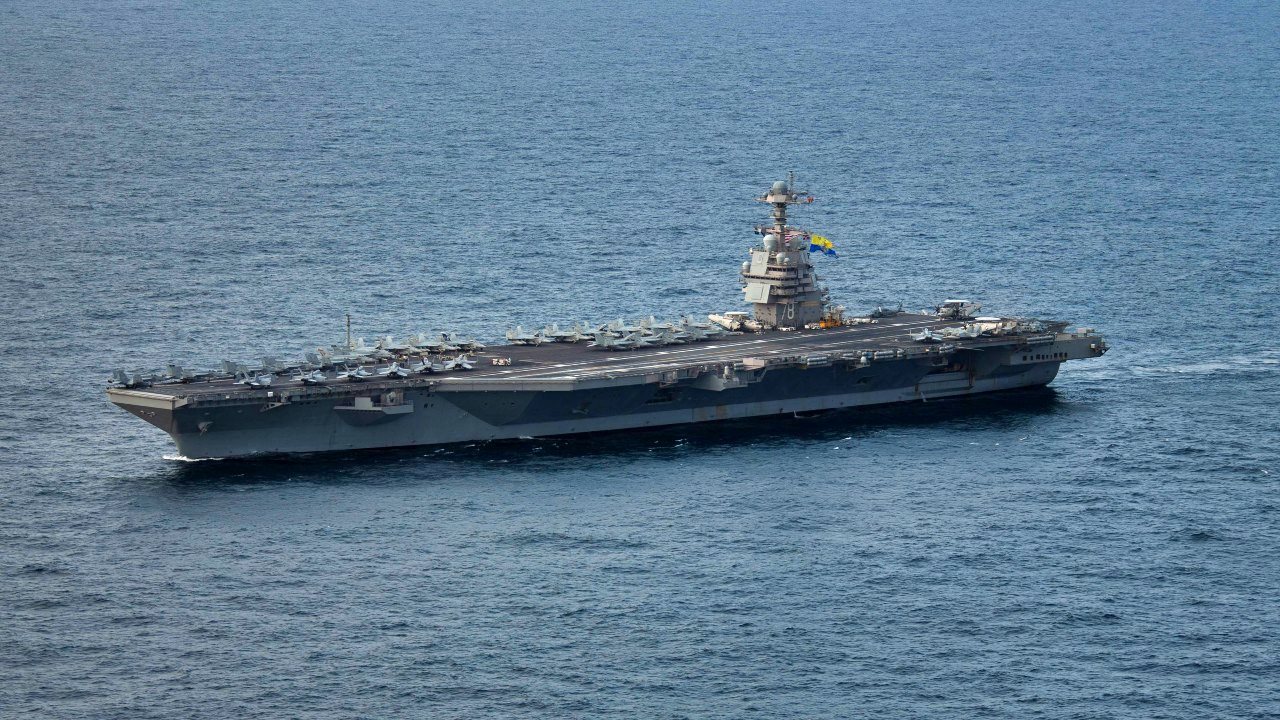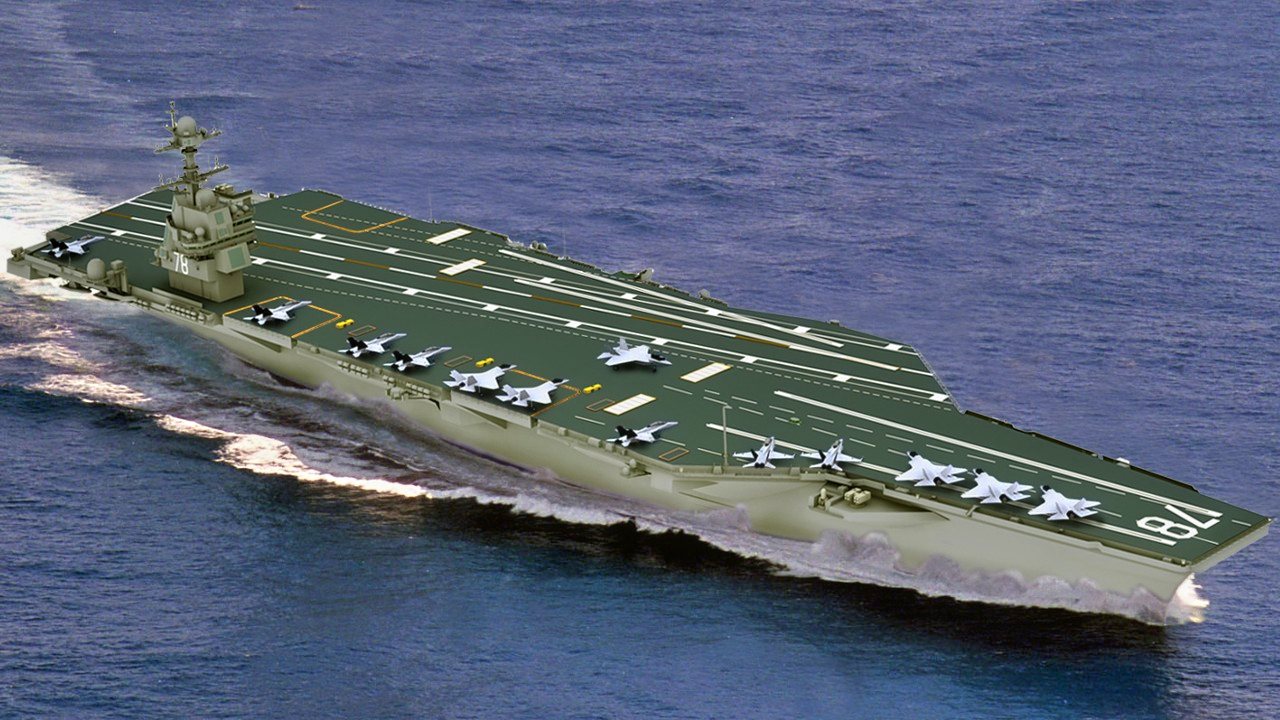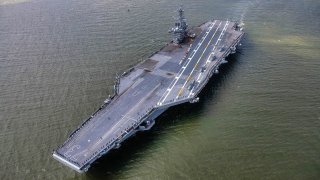The Ford-Class Might Be The Last U.S. Navy Aircraft Carriers
Despite emerging threats, the U.S. Navy remains committed to its aircraft carrier fleet, led by the advanced USS Gerald R. Ford. The Navy plans to build up to 10 more Ford-class carriers, priced at around $13 billion each.
What You Need to Know: Despite emerging threats, the U.S. Navy remains committed to its aircraft carrier fleet, led by the advanced USS Gerald R. Ford. The Navy plans to build up to 10 more Ford-class carriers, priced at around $13 billion each.

-While adversaries like China develop hypersonic weapons to target carriers, the Navy is investing in countermeasures to mitigate these risks.
-Historically, carrier classes are capped at 10 ships, with replacements entering as older ships retire.
-Congress mandates a fleet of 11 carriers to maintain global presence, ensuring the carrier’s critical role in power projection continues amid evolving defense strategies.
-The Navy will likely continue to invest in carriers while developing countermeasures to emerging threats, ensuring their operational role persists.
Future of Aircraft Carriers: How the U.S. Navy Plans to Counter New Threats
The USS Gerald R. Ford is the most advanced aircraft carrier in history. The ship has been operational for a couple of years and has just one combat deployment. And although the warship is still experiencing the “baby illnesses” that always come up in new weapons systems, it remains the most capable carrier in the U.S. Navy’s fleet.
The Navy plans to purchase up to 10 more vessels of the Ford class. This will not be cheap, judging by the USS Gerald R. Ford’s approximately $13 billion price tag.
Aircraft carriers remain the most powerful warships in the world, and the U.S. Navy will likely continue to invest in them, regardless of the cost.
The Last Aircraft Carrier Class in the Navy?
The Navy has a long history with aircraft carriers. Indeed, the Ford is the 23rd class of carrier in service with the service. There have been 15 classes of fleet carriers, six escort carriers, and two training carriers.
Some of these classes had just one ship. For example, the USS Ranger was the first purpose-built flattop and the only carrier of the Ranger class, while the USS Enterprise. the first nuclear-powered aircraft carrier in the world, was the only carrier of the Enterprise class. Other classes of carriers had dozens of ships. For instance, the Essex class had 24 fleet carriers, while the Casablanca class totaled 50 escort carriers.

The Navy has followed a 10-ship model since the 1970s: Carrier classes are expected to cap at 10 warships before the next class slowly makes its way into the fleet. Right now, the Navy has a fleet of 10 Nimitz-class carriers and the USS Gerald R. Ford. Over the coming years, it will gradually retire the Nimitz-class flattops and replace them with Ford-class carriers. The Navy is required to maintain 11 aircraft carriers – Congress passed a law to that effect in order to ensure the service has the combat capability needed to cover all areas of operations around the world.
And when the time comes to begin retiring the Ford-class flattops, starting with the USS Gerald R. Ford, the Navy will likely have a new class designed and developed to meet the operational realities and challenges of that era.
There is reason to wonder whether this model is sustainable. Aircraft carriers are becoming increasingly more vulnerable to enemy threats. The Chinese military, for example, has been developing hypersonic weapon systems whose purpose is to take out American aircraft carriers before they even come close to the fight.
Considering that each carrier could cost several billion dollars, financially it doesn’t seem to make sense to spend so much money on a weapons system at high risk of being damaged or destroyed. Yet, as has happened countless times over the history of warfare, militaries develop countermeasures. The U.S. military is already working on countermeasures for hypersonic munitions.
The aircraft carrier might be facing important threats, but is not done playing its role.
About the Author:
Stavros Atlamazoglou is a seasoned defense journalist specializing in special operations and a Hellenic Army veteran (national service with the 575th Marine Battalion and Army HQ). He holds a BA from the Johns Hopkins University and an MA from the Johns Hopkins’ School of Advanced International Studies (SAIS). His work has been featured in Business Insider, Sandboxx, and SOFREP.
All images are from Creative Commons.
More from National Interest


